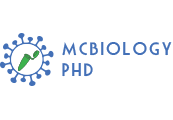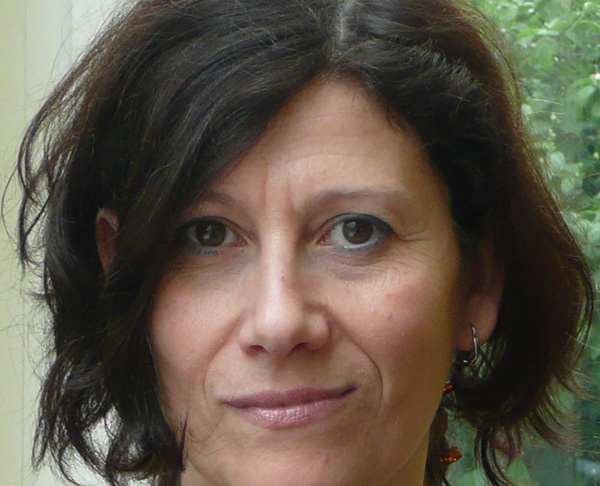Honors and Fellowships
Thesis Award in Biotechnologies, Consorzio Roma Ricerche (1991)
Human Capital and Mobility Programme (1996-1998)
Foundation Blanceflor Boncompagni-Ludovisi (1998-1999)
HHMI, Rockefeller University New York (2000-2001)
University of California, Berkeley, USA (2003)
Funding
2001 – 2003 PRIN (researcher)
2003 – 2005 PRIN (researcher)
2001 – 2004 Grant AIRC
2008 – 2013 EU FP7 Affinomics (researcher)
2011 – 2013 Grant Télévie, Luxembourg
2011 – 2014 Grant AIRC
2017 – Finanziamento annuale individuale MIUR
2018 – Finanziamento Grant Ateneo “Tor Vergata”, Mission Sustainability (researcher)
Other Professional Experiences
Teaching Staff Member, Theorethical and Pratical Course SISSA/EMBO/ICGEB
“Selecting from Phage Display”.
Research field
Our studies aim at assembling a comprehensive picture of DNA damage response (DDR) occurring in female germ cells following chemotherapy. Dormant oocytes represent unique cellular paradigms to study the DDR. Germ cells must maintain the integrity of their genome to prevent reproduction failure and limit the hereditary risk to the progeny. Compelling observations unveil a role of c-Abl in the cellular response induced by chemotherapy in female germ cells. We found that Imatinib, (a pharmacological inhibitor of c-Abl), rescued oocytes from cisplatin-induced cell death. This also had a long-term impact on fertility. However, why such germ cells are not eliminated, and rather survive, remains elusive. Therefore, we aim at describing «system perturbations» of the ovary treated with specific pathways inhibitors used in combination with chemotherapeutics. We monitor activation and inactivation of sentinel and master proteins in order to describe how reserve oocytes respond to DNA damage in presence of small molecule compounds. Our study integrates different approaches: 1) in vivo with murine models, by means of specific dosages of FDA approved pathways inhibitors to mitigate the toxic effect of chemotherapy on the gonads and 2) through a proteomic approach (based on 2D-DIGE technology) performed on gonads following DNA damage. This integrated approach will aim at identifying potential targets for pharmacological intervention. In perspective, this study will provide a framework to rationalize the differential susceptibility of the ovary to different anti-cancer treatments paving the way for a more rational personalized therapy to preserve fertility in young female patients.
Publications (last 10 years max 15)
-
Gonfloni S*, Caputo V and Iannizzotto V (2015) “p63 in health and cancer” Int J Dev Biol. 2015; 59(1-3):87-93. doi:10.1387/ijdb.150045sg
-
Gonfloni S* (2014) “Defying c-Abl signaling circuits through small allosteric compounds” Front Genetic. Nov12;5:392. doi:10.3389/fgene.2014.00392.
-
Gonfloni S*, Iannizzotto V, Maiani E, Bellusci G, Ciccone S, Diederich M (2014) Biochem Pharmacol. Nov 1;92(1):149-56.doi:10.1016/j.bcp.2014.08.034
-
Ciccone S., Maiani E., Bellusci G., Diederich M. Gonfloni S*(2014) “Parkinson’s disease: a complex interplay of mitochondrial DNA alterations and oxidative stress” Int J Mol Sci. 2013 Jan 24; 14(2):2388-409. doi: 10.3390/ijms 14022388.
-
Gonfloni S*(2013) “Targeting DNA damage response: threshold, chromatin landscape and beyond” Pharmacol Ther. Apr; 138(1):46-52. Doi:10.1016/j.pharmthera.2012.12.006.
-
Maiani E, Di Bartolomeo C, Klinger FG, Cannata SM, Bernardini S, Chateauvieux S, Mack F, Mattei M, De Felici M, Diederich M, Cesareni G, Gonfloni S* (2012) “Reply to: Cisplatin-induced primordial follicle oocyte killing and loss of fertility are not prevented by Imatinib” Nat Med. Aug;18(8):1172-4. doi: 10.1038/nm.2852.
-
Gonfloni S*, Maiani E, Di Bartolomeo C, Diederich M, Cesareni G (2012) “Oxidative Stress, DNA damage and c-Abl Signaling: At the crossroad in Neurodegenerative diseases?” Int J Cell Biol. doi: 10.1155/2012/683097
-
Maiani E,Diederich M, Gonfloni S* (2011) “DNA damage response: the emerging role of c-Abl as regulatory switch?” Biochem Pharmacol. Nov 15; 82(10):1269-76. doi: 10.1016/j.bcp.2011/07.001
-
Gonfloni S*(2010) “DNA damage response in germ cells: role of c-Abl and clinical implications” Oncogene Nov 25; 29(47):6193-202 doi:10.1038/onc2010.410
-
Gonfloni S* (2010) “Modulating c-Abl nuclear activity as a strategy to preserve female fertility” Cell Cycle Jan 15;9(2):217-8
-
Gonfloni S*, Di Tella L, Caldarola S, Cannata SM, Klinger FG, Di Bartolomeo C, Mattei M, Candi E, De Felici M, Melino G, Cesareni G (2009) “Inhibition of the c-Abl-TAp63 pathway protects mouse oocytes from chemotherapy-induced death” Nat Med Oct; 15(10):1179-85 doi: 10.1038/nm.2033
-
Paoletti F, Covaceuszach S, Konarev PV, Gonfloni S, Malerba F, Schwarz E, Svergun DI, Cattaneo A, Lamba D (2009) “Intrinsic structural disorder of mouse proNGF” Proteins Jun; 75(4):990-1009. Doi: 10.1002/prot.22311
-
Covaceuszach S, Cassetta A, Konarev PV, Gonfloni S, Rudolph R, Svergun DI, Lamba D, Cattaneo A (2008) “Dissecting NGF interactions with TrkA and p75 receptors by structural and functional studies of an anti-NGF neutralizing antibody” J Mol Biol sep12; 381(4):881-96 doi: 10.1016/j.jmb.2008.06.008
-
Candi E, Cipollone R, Rivetti di Val Cervo P, Gonfloni S, Melino G, Knight R (2008)”p63 in epithelial development” Cell Mol Life Sci 2008 Oct; 65(20): 3126-33. Doi:10.1007/s00018-008-8119-x


